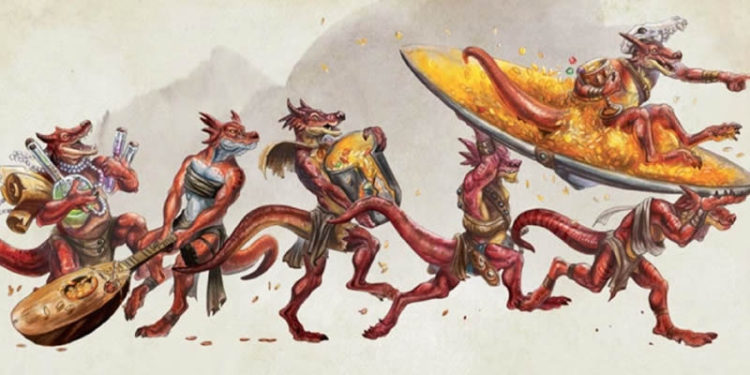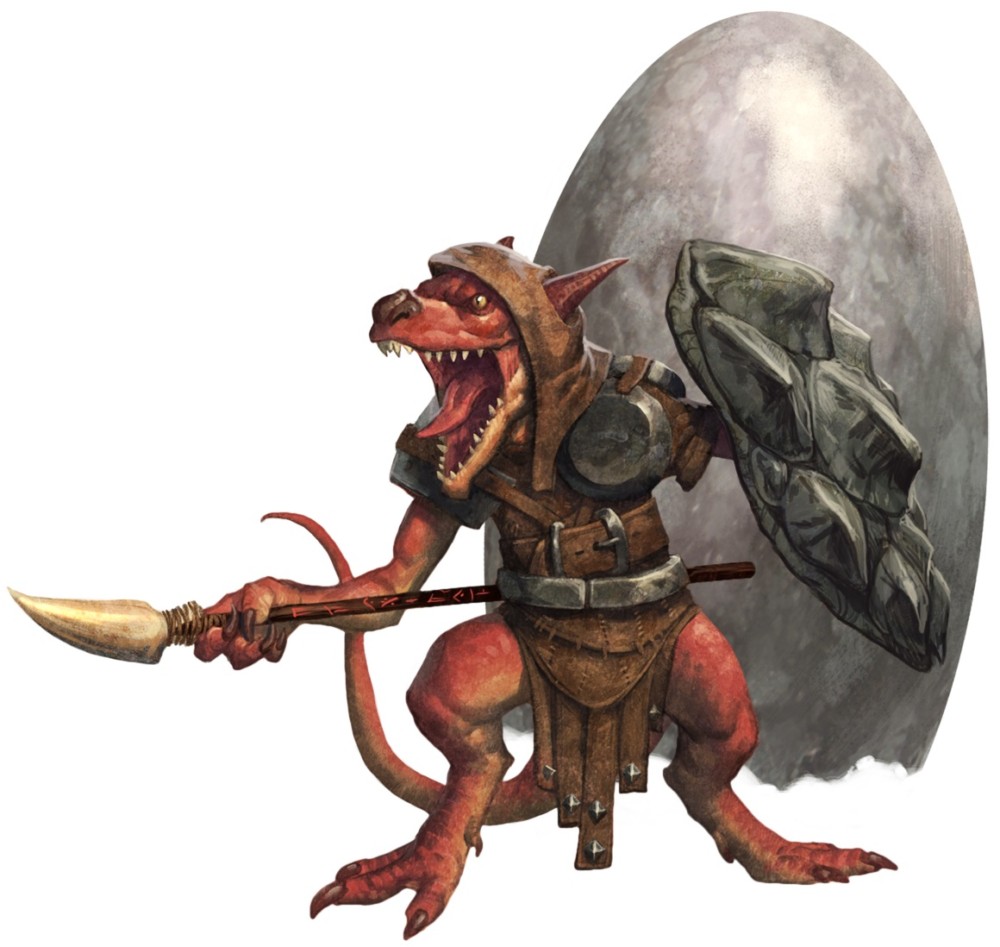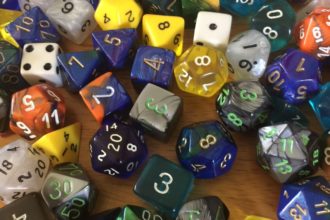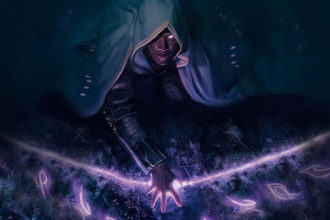Tucker’s Kobolds & Running a Kobold One-Shot

According to Wikipedia, a kobold (occasionally cobold) is a sprite stemming from Germanic mythology and surviving into modern times in German folklore. D&D has traveled far away from the traditional kobold, creating their own iconic monster.
Way back in 1974, in the Dungeons & Dragons “white box” set, the kobold was one of the first monsters introduced. Back then, they were simply described as similar to goblins, but weaker. Kobolds have been described in various ways throughout editions, but they are most often depicted as hairless with red skin, and somewhat reptilian or somewhat dog-like or both. They are also described as being weak, cowardly, good with traps and possessing an adoration of dragons.
These “little dragons” can be found all over the various D&D worlds such as under the streets of Stormreach, deep in Kobold Hall, or anywhere else you might want to hide a dragon and its trusty minions. I really like running kobolds as early monsters for my PCs to encounter, but there is the legend of kobolds that can challenge any level PC that is only whispered by players.
Tucker’s Kobolds
Every D&D player should know the legendary tale of Tucker’s Kobolds.
“These kobolds were just regular kobolds, with 1-4 hp and all that, but they were mean. When I say they were mean, I mean they were bad, Jim. They graduated magna cum laude from the Sauron Institute for the Criminally Vicious.”
If you happen to have no idea what I am talking about, read the full tale from Dragon 127 (it is a pretty short read, go check it out and I’ll wait here).
Tucker, was the name of a legendary GM in the ’80s. His dungeons were recounted in a Dragon Magazine editorial by Roger E. Moore, who was a player at Tucker’s table. This devious DM was known for using kobolds to terrorize his players with clever dungeon construction and cunning monster tactics. His weak little kobolds were protected by armor and shields, would wear down a party with traps, shoot from arrow slits, set hallways on fire and throw Molotov cocktails, and other horrible things as they ducked in and out of tiny tunnels.
“We ran into an unexplored section of Level One, taking damage all the time. It was then we discovered that these kobolds had honeycombed the first level with small tunnels to speed their movements. Kobold commandos were everywhere. All of our hirelings died. Most of our henchmen followed. We were next.”
The tale of Tucker’s Kobolds is a great example of any monster being tough, if used well. This tale is likely the reason why we see so more lore in later editions of D&D about kobolds being cunning trap-makers, rather than just low hit point fodder.

A Kobold One-Shot
I’m sure many of you are thinking about your next session of how you can kill your PCs with kobolds, just like Tucker. I recommend checking out the new trap ideas found in Xanathar’s Guide to Everything.
But let’s turn the table around…
I thought it might be fun to play a scenario where my players get to be cunning, cowardly kobolds.
Here are some quick ideas for how you could run a one-shot. These are pretty rough, but I’m hoping to try them out sometime soon. Until I get to playtest these, beware!
Creating PCs and Minions
- Volo’s Guide to Monsters has stats for using kobolds as a PC racial option
- I would have the players each create a level 1 kobold who acts as a leader, choosing from classes like Fighter or Sorcerer, or going with more kobold flavored classes like Inventor and Dragonshield, based on the monster stats. It might be easy to just let the players choose from the 3 kobolds in Volo and run them using the monster stats.
- I would also let each player share control a pool of minion kobolds using basic kobold stats (MM 195).
The DMPCs are Coming!
- I’d start the game by giving the players give a set number of turns to improve a 5 room dungeon with traps. 5 turns might work, or you could play it by ear and warn them as the DMPCs get closer with reports from scouts.
- For a location, I would be tempted just to use something like Kobold Hall (D&D 4e DMG), as simple dungeon.
- You should set-up stats for a low level party of PCs. To be lazy I would just grab pre-built characters to throw a fighter, cleric, wizard and rogue at the player’s kobold lair.
- The player’s kobolds could be defending a white dragon wyrmling they worship or protecting their own warren of eggs.
- For a little extra fun, you could make the DMPCs recognizable as past PCs run by your players or D&D all-stars from the books such as Drizzt or live action groups such as Force Grey or Vox Machina.
Prep Stage
As mentioned, I would tell the players they get a set number of turns to set-up the dungeon. I think 5 or 10 minute turns would work best, but really time would be pretty arbitrary.
- A player who wants to place a trap should roll to set the DC for the trap. You might want to go with the same formula as casting the save DC for a spell, using the kobold PC’s Intelligence or Dexterity as the base stat (Example: 8 + Proficiency + Mod) to set their trap-maker ability.
- You could also just have traps come with higher DCs cost more actions, such as 1 turn/action is DC 10, 2 actions is DC 15.
- Your DMPCs would act just like player PCs trying to find traps set by a DM, but in this case the traps were set by kobold PCs.
- The effect of the trap depends on what the trapmaker wants to happen; at most, it can attack with a weapon (such as a spear or crossbow trap, or maybe Alchemist’s Fire or Holy Water, or even an explosive if the party has them), hit with a heavy object (such as a swinging log or a falling rock), or restrain the target (who can make a Strength check with the same DC as to avoid or notice the trap as an action to escape)
- Simple traps include darts, spikes, pits, etc. There are lots of examples of simple traps in the DMG and Xanathar.
- If your players really want to run with creating a complex trap, try running with it.
Other Stuff
- Your players could ask to dig a tunnel, trench, add a door or portcullis. I would just set these based on how many turns I thought it would take.
Running the Scenario
Once the PCs are in the dungeon and prep is over players can attack with their PC each combat round and:
- Attack with a minion (1 point)
- Help/Aid (1 point) – set-up another kobold to get pack tactics or other benefit
Who is the Winner?
You could play the scenario out as a pass/fail with the DMPCs either defeating the kobolds or getting killed/retreating. Another option would be to put a score into effect such as this:
- 1 point for assist (help, pack tactics)
- 1 point for damage to a PC via attack or placed trap
- 5 points for dropping a PC to 0 hp
- 5 points for having their kobold PC still alive at the end of the game
- Most points win
Share your kobold stories or let us know what you think of running a kobold one-shot in the comments below.



